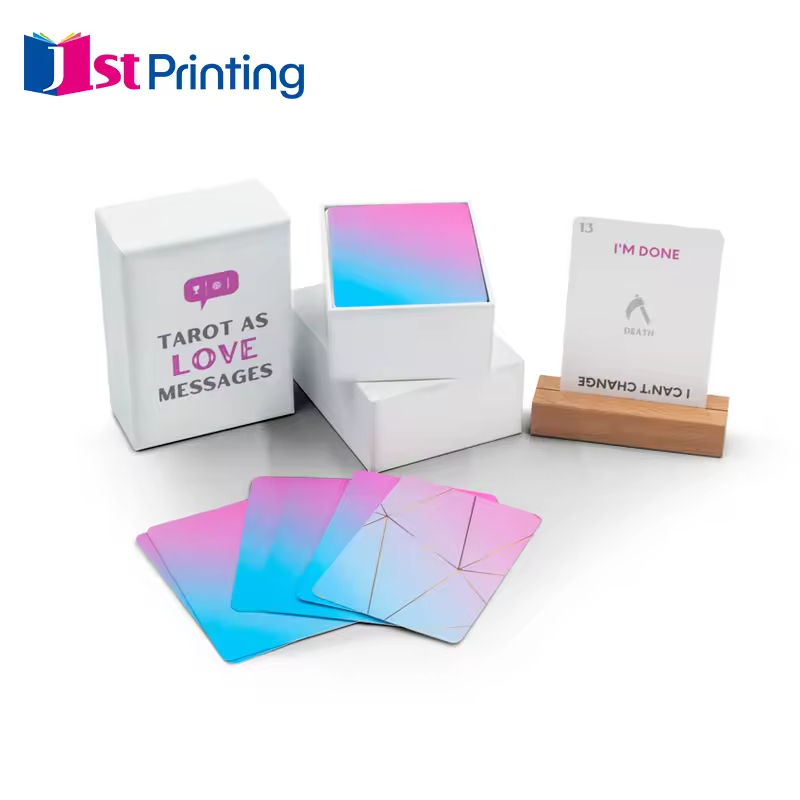Book Binding: The Art of Transforming Manuscripts into Books
Essential Book Binding Techniques and Methods
Coptic Stitch: Ancient Durability for Modern Journals
The Coptic stitch is one of the oldest bookbinding techniques, dating back to the 2nd century A.D. This method is renowned for its durability and flexibility, making it ideal for creating robust and long-lasting journals. The Coptic stitch connects sections of pages using a single, continuous thread, allowing books to open completely flat without harming the spine.
Materials for Coptic binding include a variety of thread types, such as waxed linen or cotton thread, which provide different levels of tensile strength and aesthetic appeal. The covers can be crafted from anything ranging from cardboard to leather, enhancing the book's visual and tactile elements. These materials not only contribute to the journal's durability but also to its overall aesthetic.
To bind a journal using the Coptic stitch, follow these steps:
- Gather your materials, including the paper, needle, thread, and cover materials.
- Prepare your book sections and pierce them for sewing.
- Begin stitching from the inside of the first section, looping over the cover, and continue through each section.
- Pull the thread tight with each stitch to maintain tension and create a firm spine.
For those passionate about bookbinding, the Coptic technique represents a perfect fusion of tradition and craftsmanship in creating durable journals.
Japanese Stab Binding: Elegance in Simplicity
Japanese stab binding is admired for its simplicity and aesthetic elegance, making it a popular choice for those who appreciate visually pleasing notebooks. This technique uses a range of decorative stitches that add an artistic element to the final product, making it an ideal choice for creating eye-catching diary covers.
When pursuing Japanese stab binding, consider the types of paper, thread, and cover materials used. Typically, lighter paper facilitates easier stitching, while thicker paper benefits from sturdy threads like waxed cotton. The cover can be of stiff material like cardboard or decorative paper, providing a backdrop for the binding design.
To create a Japanese stab-bound book, follow these steps:
- Assemble your materials: paper, thread, needle, ruler, and cover sheets.
- Mark evenly spaced dots along the margin of your papers and covers.
- Use a sharp needle or bodkin to pierce through these dots.
- Starting at one end, thread through the holes in a sequence specific to your chosen pattern.
These straightforward steps ensure you create an exquisite, bound notebook that merges traditional elegance with modern creativity.
Saddle Stitch Binding for Quick Projects
Saddle stitch binding is a go-to method for quick and efficient book projects, especially when creating items like bullet journals and newsletters. This technique involves folding sheets of paper and using staples or thread to bind them through the folded spine, resulting in a straightforward and time-effective process.
The benefits of saddle stitching include its cost-effectiveness and simplicity, making it accessible to DIY enthusiasts and professional printers alike. Its efficiency is especially valuable for smaller publications where scale and time are of the essence.
Here’s a simple guide to saddle stitching:
- Fold your assembled sheets in half to create a booklet.
- Align the sheets so that the edges are even.
- For thread binding, use a needle to sew through marked points along the spine. Alternatively, use a stapler to fix the sheets at two or three points.
This method's ease of execution and minimal resource requirements make it ideal for quick journals and projects alike.
Perfect Binding: Professional-Grade Simplicity
Perfect binding is the staple option in the publishing industry for creating professional-quality magazines, softcover books, and composition notebooks. This method binds pages together with an adhesive applied along the spine, giving the book a clean, flat edge.
The process requires specific machinery that can bind multiple pages efficiently, setting perfect binding apart from other methods in terms of production volume and cost. Yet, it’s worthwhile as it offers a sleek, professional finish that is appealing to consumers and businesses aiming for a polished product.
Some advantages of perfect binding include its fast execution and the minimal manpower required due to automation. However, businesses should consider the potential drawbacks: a less durable spine over time, as the binding relies solely on adhesive. Despite these considerations, perfect binding is a practical choice for businesses chasing a seamless and professional presentation in their publications.
Modern Innovations in Manuscript Preservation
Cold Glue Technology: Eco-Friendly Advancements
In recent years, cold glue technology has revolutionized book binding by offering an eco-friendly alternative to traditional methods. Unlike hotmelt techniques that require high temperatures of 130-200 °C and are costly and harmful to both the environment and workers, cold glue is applied at room temperature, reducing energy consumption by up to 80%. This technology has been successfully implemented by companies like Ribler Technology, which reduced glue and paper consumption while eliminating toxic fumes and CO2 emissions. The ecological benefits are substantial, as the waste produced can be safely disposed of in household wastewater. According to studies, the cost of hotmelt production can be as much as 30% higher than cold glue processes, further emphasizing the economical and environmental advantages.

Digital Integration for Customizable Designs
Digital tools have transformed the landscape of book binding, providing unprecedented opportunities for customization and personalization. Software solutions now allow bookbinders to create unique designs, varying everything from cover materials to internal diary layouts with ease. Programs like Adobe InDesign and Canva facilitate intricate design processes, while tools like 3D printers offer innovative approaches to creating bespoke covers and binding mechanisms. This integration of technology not only enhances creativity and efficiency but also prepares binders for future trends. Experts predict a growing demand for personalized compositions and custom notetaking solutions, making digital adaptation essential. As technology continues to evolve, it will undoubtedly play a crucial role in preserving manuscripts and adapting them for modern preferences in composition notebooks and journals.
DIY Book Binding for Personal Creativity
Tools for Crafting Bullet Journals and Composition Notebooks
To embark on a DIY bookbinding journey, especially for creating personalized bullet journals and composition notebooks, having the right tools and materials is essential. Here’s a list of must-have items:
- Bone Folder: This tool is indispensable for creasing paper to achieve sharp, crisp folds. A bone folder helps in scoring and folding paper, which is vital in bookbinding.
- Awl: Used to punch holes in paper or fabric, an awl is key for stitching the binding together. Look for brands that offer ergonomic handles for ease of use.
- Needles and Thread: Strong and durable needles paired with waxed thread ensure binding longevity. Polyester thread is highly recommended for its durability.
- Binding Glue: Opt for PVA (polyvinyl acetate) glue, renowned for its adhesive strength and flexibility.
- Ruler and Cutting Mat: Precise measurements and safe cutting require a robust ruler and mat. Stainless steel rulers are highly durable, and self-healing mats offer longevity.
- Decorative Paper and Covers: These enhance the aesthetic appeal of the finished notebook. Textured or patterned papers allow for creative customization.
To further personalize their journals, users can explore creative ideas such as incorporating pockets for storing small items or adding tabs for better organization. The use of stamps, stickers, and colored inks can also enhance personal expression and organizing skills in bullet journals.
Transforming Loose Sheets into Custom Diaries
For those interested in transforming loose sheets into beautifully organized custom diaries, simple binding techniques can be quite effective. Here is a quick overview of the process:
- Gather Materials: Start by assembling loose sheets of paper, cardboard for covers, and any decorative elements required for the diary.
- Select a Binding Technique: Consider simple techniques like saddle stitch or a Japanese stab binding, which are suitable for beginners and provide an elegant finish.
- Organize the Sheets: Decide on a theme or layout that resonates with personal preferences or specific niche markets. Possible themes include travel diaries, art journals, or daily planners.
- Create the Cover and Bind: Cut the cardboard to size, decorate if desired, then bind the sheets and cover using your chosen method.
- Personalize: Encourage creativity by experimenting with materials like ribbons or fabric for closures or incorporating printed images and quotes into the diary’s design.
In promoting creativity and personalization, readers should not hesitate to experiment with different materials and techniques. This hands-on approach to diary creation can yield unique, personalized diaries that reflect individual tastes and styles, providing an outlet for creativity and self-expression.
Premium Book Binding Products for Every Need
Custom Transfer Printing Rose Gold Foil Spiral Organizer
Rose gold foil decorations on spiral organizers offer an elegant and trendy appearance that appeals to modern stationery enthusiasts. This design trend combines sophistication with a touch of luxury, making it a sought-after choice for planners and diaries. Custom transfer printing is a technique that allows personalized designs to be transferred directly onto products, enhancing their value and appeal in the marketplace. Expert opinions highlight the increased demand for personalized stationery, with consumers appreciating the unique touch and exclusivity these products offer.
Water Proof Cards Printing Moisture-Proof Services
Waterproof materials play a crucial role in card printing services, offering protection in diverse environments. This is especially beneficial for customers who need durable cards that can withstand heavy use and harsh conditions, such as outdoor events or damp settings. The technology behind moisture-proof services ensures cards remain intact and retain their appearance over time. Customer feedback indicates high satisfaction levels, with reports of cards remaining pristine even in challenging conditions, highlighting their effectiveness and reliability.
Wholesale Custom Oracle Cards Game Card
Oracle cards have gained immense popularity due to their versatile applications in gaming, therapy, and art. Offering wholesale custom oracle cards provides businesses with a significant competitive advantage, tapping into a growing market with promising potential return on investment (ROI). Market research suggests a bright future for the oracle card sector, with trends pointing to increased demand and innovation opportunities. Businesses that invest in wholesale oracle cards stand to benefit from this upward trajectory, with potential for expanding their customer base and enhancing brand visibility.
















.png)

 ONLINE
ONLINE